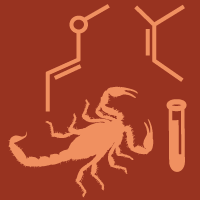Topic Menu
► Topic MenuTopic Editors



Instrumental and Bioanalytical Methods for Food Contaminant Detection
Topic Information
Dear Colleagues,
Food safety is of paramount importance for a wide variety of stakeholders, namely, producers, industry, governmental bodies, and citizens. However, the intensive and globalized food production indicates that food testing from farm-to-fork is a rather challenging task. In fact, although regulatory requirements are in force globally, contaminated food is still consumed, resulting in (i) health-related problems due to acute toxicity incidents, e.g., consumption of an undeclared allergen; (ii) significant financial losses as in the fipronil case (insecticide in eggs, EU, 2017); and (iii) foodborne diseases, such as salmonellosis. Therefore, the development of analytical methods capable of providing fit-for-purpose results is necessary to tackle such emerging risks. Two different types of methods (in principle complementary) have been applied, namely, instrumental analysis and screening analytical methods predominantly based on biorecognition events.
We are pleased to invite you to submit papers that showcase and discuss novel analytical methods (both instrumental and sensor-based) in the food safety field. The submitted papers should address rapid, cost-efficient, robust, and sensitive analytical procedures to allow effective testing of toxicologically relevant food contaminants. Such contaminants include chemical contaminants, such as pesticide or antibiotic residues, natural toxins, e.g., mycotoxins or marine toxins and food pathogens.
This Special Issue aims to provide a fruitful collection of papers (both original and review papers) based on (a) novel chromatographic separation methods coupled to various detectors with special emphasis to mass spectrometric (MS) detection, (b) optical and electrochemical biosensors and their potential to be hyphenated with smartphones as their analytical detector, (c) approaches to automate and miniaturize food contaminant analysis, e.g., lab-on-a-chip (LOC) assays or micro total analysis systems (μTAS), and (d) method validation and cross comparison toward golden standard methods.
We look forward to receiving your contributions.
Prof. Dr. Jana Pulkrabova
Dr. Aristeidis Tsagkaris
Prof. Dr. Efstathios Z. Panagou
Topic Editors
Keywords
- chromatography
- mass spectrometry
- biosensors
- bioassays
- point-of-care/point-of-need
- lab-on-a-chip
- food safety
- food contaminants
- toxins
- food pathogens
- validation
Participating Journals
| Journal Name | Impact Factor | CiteScore | Launched Year | First Decision (median) | APC |
|---|---|---|---|---|---|

Microorganisms
|
4.5 | 6.4 | 2013 | 15.1 Days | CHF 2700 |

Toxics
|
4.6 | 3.4 | 2013 | 14.7 Days | CHF 2600 |

Toxins
|
4.2 | 7.5 | 2009 | 18.4 Days | CHF 2700 |

MDPI Topics is cooperating with Preprints.org and has built a direct connection between MDPI journals and Preprints.org. Authors are encouraged to enjoy the benefits by posting a preprint at Preprints.org prior to publication:
- Immediately share your ideas ahead of publication and establish your research priority;
- Protect your idea from being stolen with this time-stamped preprint article;
- Enhance the exposure and impact of your research;
- Receive feedback from your peers in advance;
- Have it indexed in Web of Science (Preprint Citation Index), Google Scholar, Crossref, SHARE, PrePubMed, Scilit and Europe PMC.

